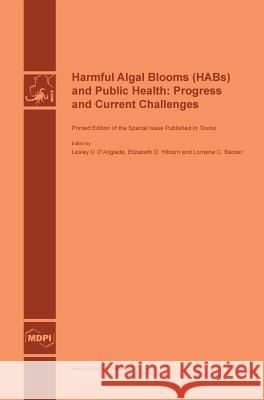Harmful Algal Blooms (HABs) and Public Health: Progress and Current Challenges » książka
Harmful Algal Blooms (HABs) and Public Health: Progress and Current Challenges
ISBN-13: 9783038421559 / Angielski / Twarda / 2016 / 316 str.
Over the past decade, coastal and freshwater systems in the U.S. and worldwide have experienced an apparent increase in the frequency and geographic distribution of harmful algal blooms (HABs). These blooms can adversely affect both public health and ecosystem health. Toxin-producing HABs can accumulate in drinking and recreational waters and in foods of aquatic origin such as fish and seafood. Human and animal health risks include exposure to the toxins through eating contaminated food or drinking or swimming in contaminated water. Because of these potential public health risks, several countries and U.S. states have developed monitoring programs and guidelines for drinking and recreational water quality to protect public health. This special issue will present research papers and reviews on various aspects of public health and environmental responses to harmful algal blooms. The subthemes considered include:
- HAB monitoring for public health protection and response
- Public health surveillance for HAB-related exposures and illnesses
- Health risks from exposure to contaminated fish and shellfish, drinking and recreational water
- Remediation and treatment technologies
- Challenges and successes of HAB-related public health education campaigns and programs
- HAB risk management
Over the past decade, coastal and freshwater systems in the U.S. and worldwide have experienced an apparent increase in the frequency and geographic distribution of harmful algal blooms (HABs). These blooms can adversely affect both public health and ecosystem health. Toxin-producing HABs can accumulate in drinking and recreational waters and in foods of aquatic origin such as fish and seafood. Human and animal health risks include exposure to the toxins through eating contaminated food or drinking or swimming in contaminated water. Because of these potential public health risks, several countries and U.S. states have developed monitoring programs and guidelines for drinking and recreational water quality to protect public health. This special issue will present research papers and reviews on various aspects of public health and environmental responses to harmful algal blooms. The subthemes considered include:
- HAB monitoring for public health protection and response
- Public health surveillance for HAB-related exposures and illnesses
- Health risks from exposure to contaminated fish and shellfish, drinking and recreational water
- Remediation and treatment technologies
- Challenges and successes of HAB-related public health education campaigns and programs
- HAB risk management











